How to Stop Basement Seepage?

Basement seepage occurs due to these 8 reasons, such as faulty gutters and downspouts, foundation cracks, inadequate waterproofing, high hydrostatic pressure, poor sealing, lack of sump pump, plumbing leaks in the basement areas, and improper landscape grading. These reasons cause a lot of structural and aesthetic damage. To prevent these problems, you can follow the steps below to stop the basement seepage.
How to stop basement seepage?
- Waterproof the basement interiors and exteriors
- Repair basement cracks
- Build French drains
- Install sump pumps
- Seal the cove joints
- Install window wells
- Clean the gutters and downspouts
- Install dehumidifier
- Control the watering in the garden
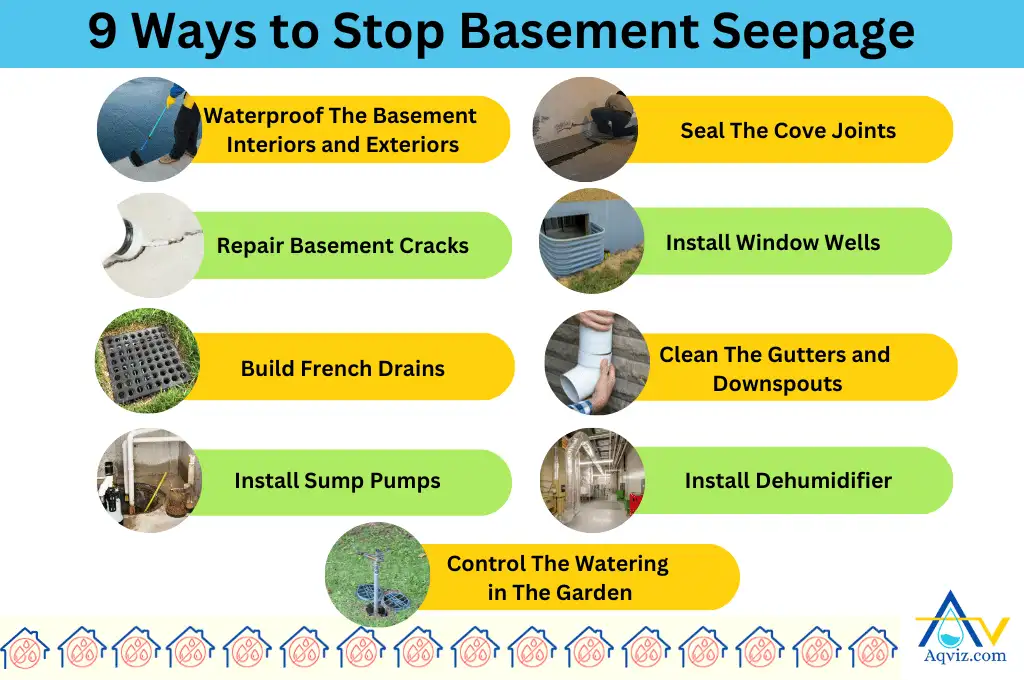
If you do not stop basement seepage, you can see structural damages, mold growth on the walls and floor, damage to possessions, electrical hazards, decreased property value, increasing utility bills, pest infestation, health risks, and aesthetic damage in the basement. A proper water protection method can stop all of these damages and problems in the basements.
1. Waterproof the Basement Interiors and Exteriors
Applying a waterproof membrane on both the inside and outside of the basement walls can prevent water infiltration. You can use sheet membranes ( EPDM , HDPE, and bituminous ) for the exterior waterproofing. Basement exterior waterproofing is the most efficient way to stop the seepage from the basement. Basement exterior waterproofing should be done during the basement construction.
You can use both liquid and sheet membranes to protect the basement interior from water seepage and leakage. The advantage of basement waterproofing is it provides double protection against water ingress and can significantly increase the lifespan of your basement structure. Before you start basement waterproofing, you should know all about basement waterproofing and how to waterproof the basement properly.
2. Repair Basement Cracks
Basement cracks are the entry points of the seepage in the basement wall and floor. You should repair these cracks using a sealant or filling to stop water infiltration. If these cracks are spread over the basement, you can use the polyurethane injection method to stop the water from seeping into the basement. The advantage of this method is that it’s a relatively simple and inexpensive way to prevent seepage in the underground area.
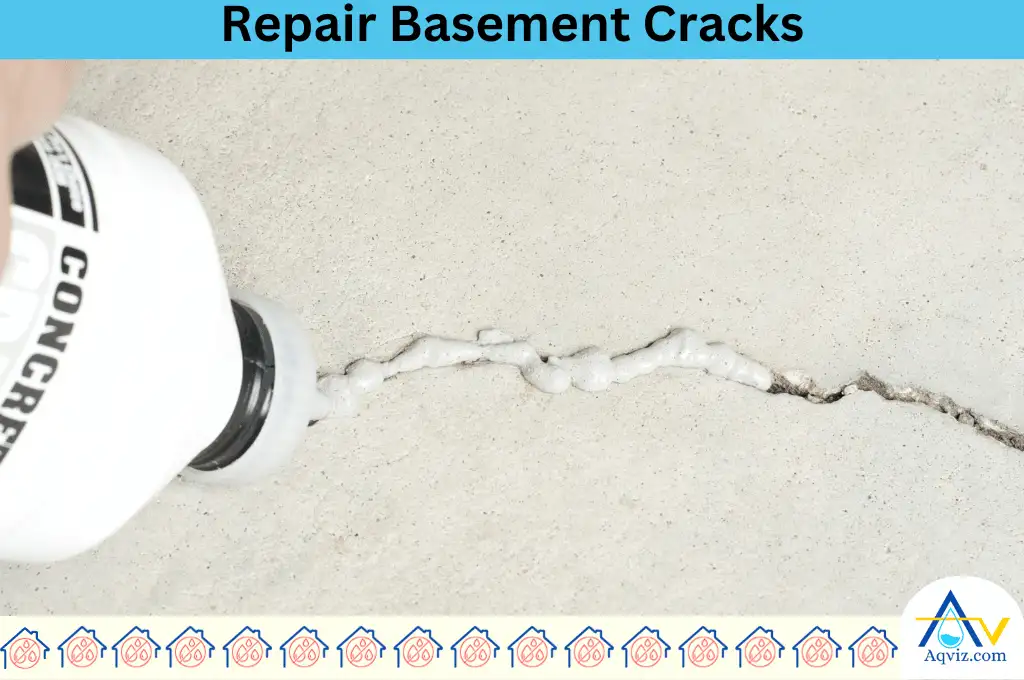
3. Build a French Drain
Building a French drain is an effective way to remove saturated water in the soil and stop water infiltration into the basement. The French drain is a trench around the perimeter of the basement. It is filled with gravel and crushed granite after placing a perforated pipe. A French drain can redirect the infiltrated water from the saturated soil in the basement. Hence, it is a successful way to prevent water seepage from the basement walls even higher water table.
The French drain prevents the accumulation of water around the foundation of your house, thus protecting its structural integrity. It provides an easy escape route for water, reducing the pressure on your basement walls and floor. The French drain is a cost-effective and long-lasting solution to stop the water seepage from the basement. It requires minimal maintenance once installed.

4. Install a Sump Pump
Installing sump pumps is another proven method to stop basement water seepage. A sump pump is a submersible pump that is installed in the lowest part of your basement. It is designed to collect water in a sump basin and pump it out and away from your house.
These are the 4 advantages of this system.
- A sump pump is an efficient way to remove both surface and groundwater.
- It ensures the basement remains dry even during heavy rains
- A sump pump provides an additional layer of protection in case of plumbing leaks or appliance malfunctions.
- It increases the value of your home by providing a reliable solution to a common problem.
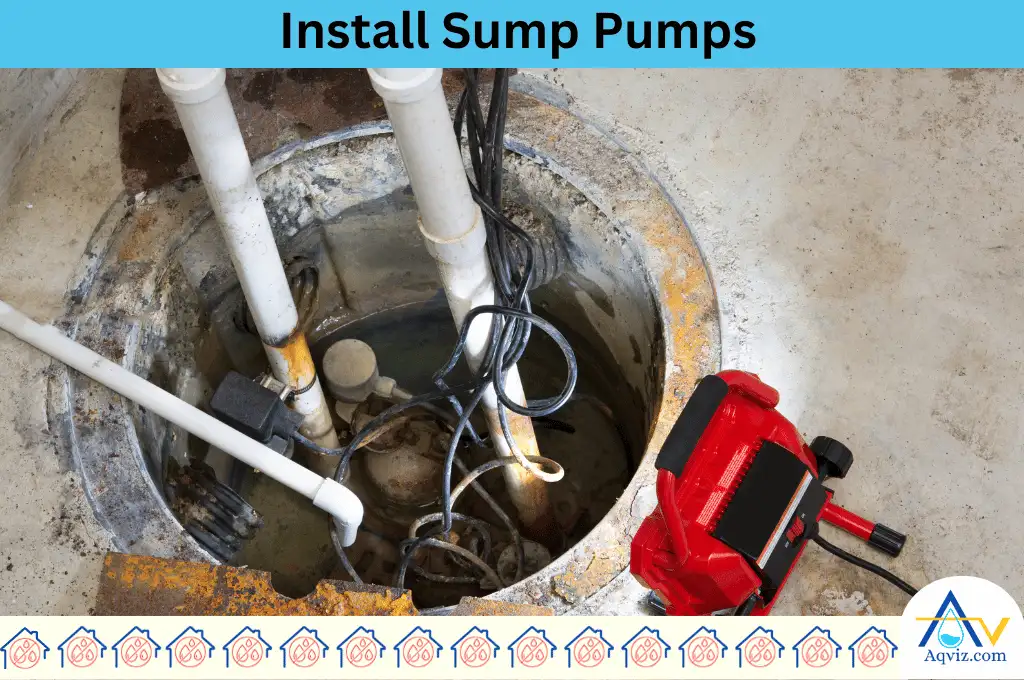
5. Seal the Cove Joints
Sealing the cove joints ( where the basement floor meets the wall) can be an effective method to halt the water infiltration in your cellar. The cove joint is a common entry point for water seepage into the basement. You can create a watertight barrier using a high-quality sealant that prevents water from seeping through the basement wall and floor.
These are the 3 advantages of cove joint sealing.
- It’s a cost-effective solution as compared to other extensive waterproofing methods.
- Sealing cove joints prevents water seepage and keeps out bugs and other pests.
- This method also helps in reducing the humidity level in the basement.
6. Install Window Wells
Window wells installation is another efficient way to stop water seepage in your basement. They are designed to prevent water from accumulating against your basement windows.
These are the 3 advantages of this method
- Window wells not only prevent water leakage but also allow more light into your basement, making it a more pleasant space.
- They provide an emergency escape route in case of fire or other emergencies.
- Window wells also protect your basement windows from damage due to soil pressure, extending their lifespan.
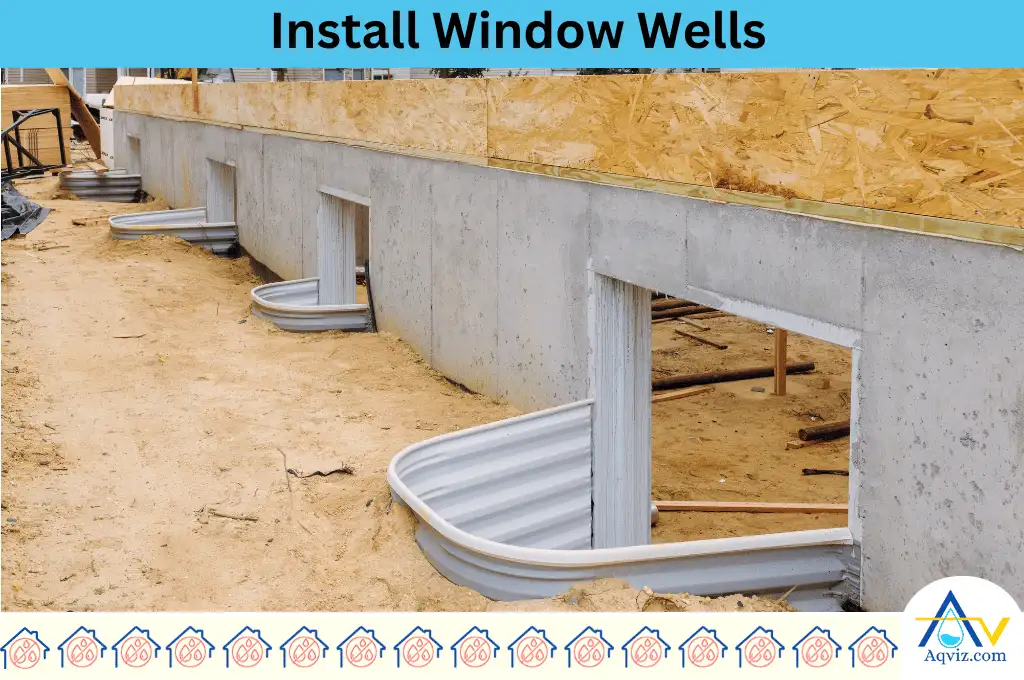
7. Clean the Gutters and Downspouts
Maintaining clean gutters and downspouts diverts rainwater away from your home’s basement. If gutters and downspouts are clogged or not functioning properly, water can overflow and accumulate around the foundation. It tends to seepage into the basement. Hence, you should keep them clean to ensure that water is effectively channeled away. It will reduce the risk of water infiltration. This is a cost-effective way to prevent potential damage to the home exterior and landscape.
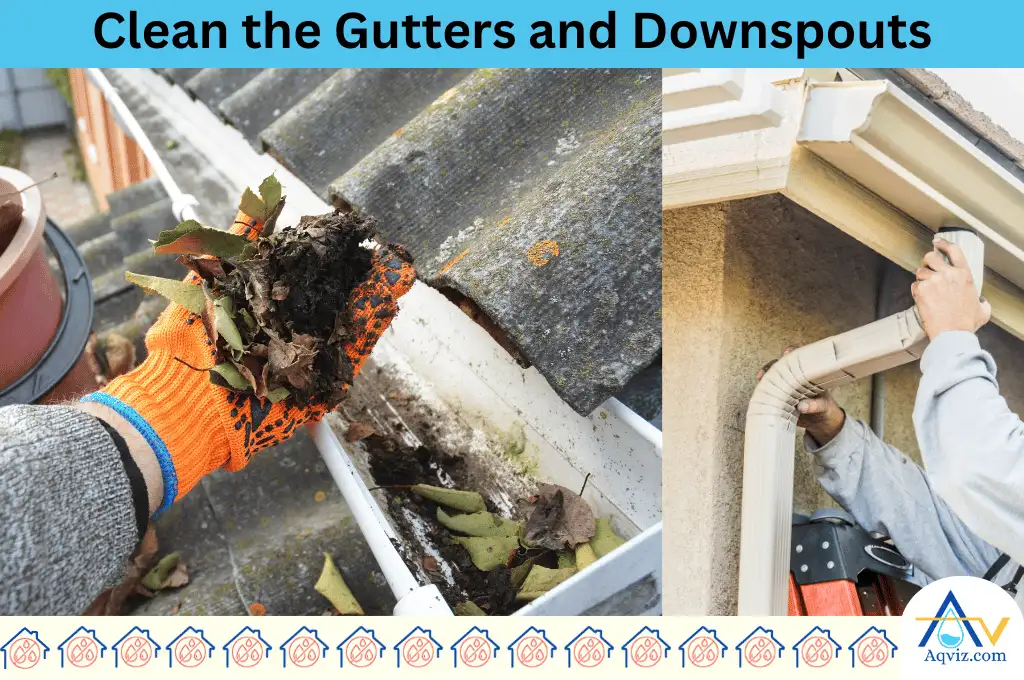
8. Install a Dehumidifier
A dehumidifier helps you reduce the humidity levels in the air in the basement. It prevents many moisture-related problems such as damp spots, mold and mildew, and any moisture-related damages due to seepage. Dehumidifiers can improve air quality, prevent structural damage, and create a healthier living space.
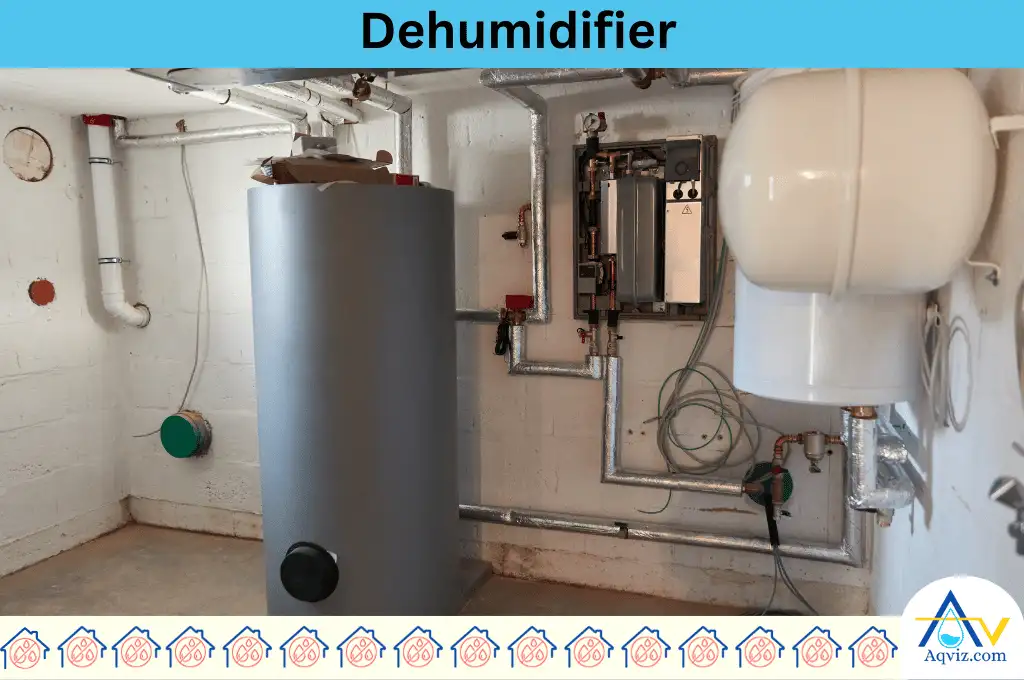
9. Control the Watering in the Garden
Controlling the irrigation in your garden can significantly help reduce the water leakage in your underground space. The leaked water can increase the water table, and it builds up the moisture around the foundation, which can eventually seep into your basement. This method not only helps to maintain a dry and safe basement but also contributes to the health of your garden plants by preventing overwatering. An added benefit is that it reduces the risk of soil erosion around your home’s foundation, maintaining its structural integrity.
What are the 8 Reasons for Basement Seepage?
The reasons for basement seepage can be categorized into two main categories such as environmental problems and human mistakes. Among them, environmental-based reasons for the basement seepage can be minimized by planning, while human-based reasons can be reduced by improving expertise.
The most common 8 reasons for basement seepage are:
- Poor exterior drainage system: A poorly designed exterior drainage system is a major cause of water infiltration in the lower level of the basement. If the water is not correctly diverted away from your home, it can accumulate around the foundation and increase the seepage.
- Faulty gutters and downspouts: Rainwater can overflow and pool around the foundation due to faulty gutters and downspouts. Pooled water close to the basement can penetrate to the soil and increase the seepage.
- Cracks in the foundation: Cracks in the foundation allow water to seep into the basement. It increases the dampness and moisture level of the basement walls and floor.
- Inadequate basement waterproofing: Inadequate basement waterproofing can allow water inside. This creates a lot of structural and aesthetic problems in the basement.
- Hydrostatic pressure at the basement: Hydrostatic pressure is a force exerted by water in the soil surrounding your home’s foundation. This pressure can force water through even the smallest cracks, leading to increased basement seepage.
- Poorly sealed cove joint: A poorly sealed cove joint, where the basement wall meets the floor, can also cause water to seep into your basement. If not sealed properly, it can allow water to infiltrate, increasing the moisture levels.
- Lack of sump pump: Lack of a sump pump can increase the flooding level of the basement. Hence, seeped water does not drain at the correct levels. It dampens the walls by increasing the seepage height.
- Plumbing leaks in the basement areas: Plumbing leaks can lead to water seeping into the surrounding areas, and they increase the moisture level in the basement.
- Improper landscape grading: When the landscape slopes towards the foundation, it can direct rainwater towards your home. This can increase the chances of water seeping into your basement.
What are the Damages in the Basement Due to Seepage?
Basement seepage damages the structure in two ways: structural damage and aesthetic damage. Structural damage is the physical damage to the basement, while aesthetic damage is the damage to the appearance. Below 10 damages are the most common structural and aesthetic damages in the basement.
- Structural Damage: Prolonged water seepage can weaken the basement foundation. It may lead to cracks and instability in the structure.
- Mold Growth: Persistent dampness in the underground room encourages the growth of mold. This can lead to health issues.
- Damage to possessions: Infiltration of water can ruin your stored items. Especially those made of fabric or paper.
- Electrical Hazards: Moisture infiltration can cause electrical hazards. It can lead to short circuits or electrical shocks.
- Decreased Property Value: Chronic water seepage issues can decrease your property value. It’s a significant concern for homeowners.
- Increased Utility Bills: Dampness in the basement can increase humidity. This can lead to higher heating and cooling costs.
- Pest Infestation: A damp basement can attract pests. These pests can cause further damage to your property.
- Health Risks: Persistent dampness can lead to respiratory issues, especially for those with allergies or asthma.
- Aesthetic Damage: Water stains and peeling paint can ruin the look of your basement. It can make the space unattractive and unwelcoming.
